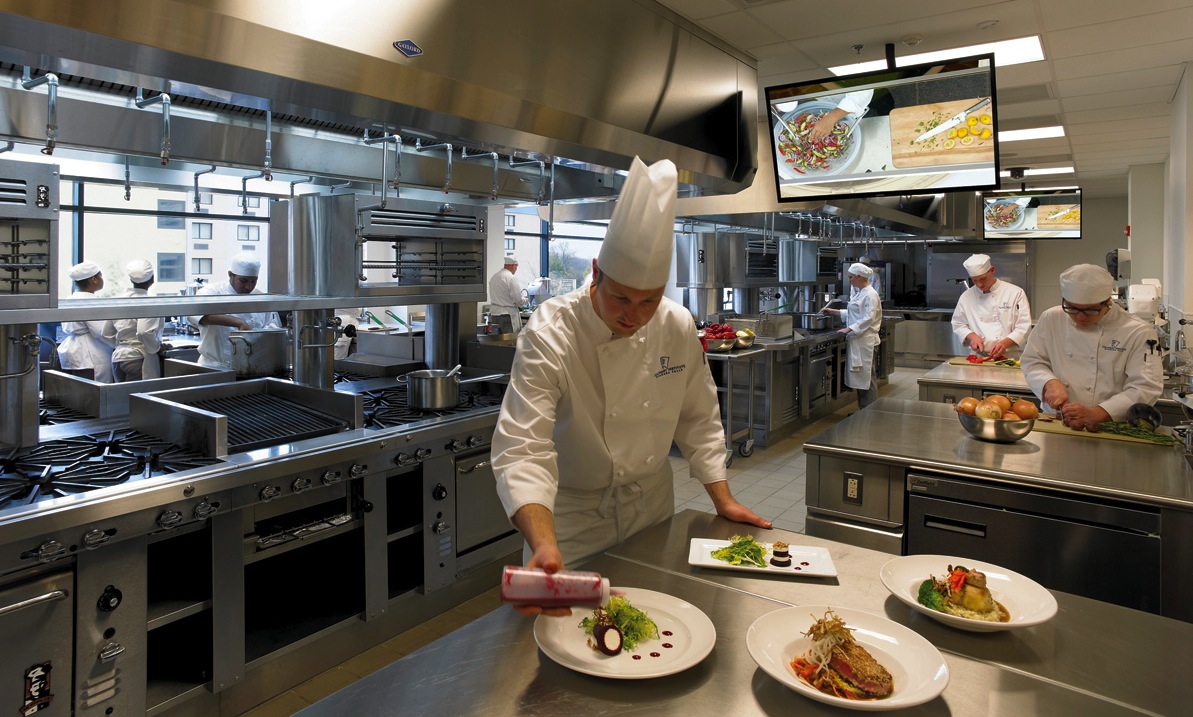With capital budgets strained, renovation may be an increasingly attractive money-saving option for many college and universities.
Deciding whether renovation is more cost effective than new construction comes down to a few key questions:
• Can the existing structure support the program?
• Is the structure still sound?
• Is hazardous materials abatement needed?
• Will current occupants have to be relocated during construction? If so, what are the options?
Tom Chung, AIA, LEED BD+C, says it is worth spending extra time to do a thorough investigation of structural issues and infrastructure. “University officials understand this if they have been burned on a previous rehab project,” says Chung, a Principal with Leers Weinzapfel Associates Architects.
Unanticipated asbestos abatement can be a budget buster. Occupant relocation costs can be onerous if the college has to rent an off-campus facility. “You could spend $1 million or more to relocate for two years of construction time,” he says.
Niagara County Community College ran into an asbestos abatement problem in renovating the Rainbow Centre Mall in downtown Niagara Falls, N.Y. Originally constructed in the 1970s as a parking garage, the property fell into disuse and was donated to the college. The structure was a mess, says Peter C. McCarthy, LEED AP, Project Designer with CannonDesign. “It was leaking badly and had mold,” he says.
But the precast concrete structural components were still sound, and the design firm was able to devise plumbing and HVAC systems to fit the structural bones so that only minimal structural alterations were needed. A total gut rehab turned the building into the Niagara Falls Culinary Institute, which has since become a hot downtown destination for foodies, with two restaurants, a pastry shop, a wine shop, and a food-themed bookstore.
If all else fails, try turning to targeted grants. Niagara County CC used a $270,000 New York State Energy Research and Development Authority incentive grant to offset the cost of energy-efficiency measures, notably variable-speed kitchen exhaust hoods controlled by smoke sensors. In 2013, the school saved $38,000 in energy costs from its above-code systems and features.
The lesson: Building Teams would do well to help their college and university clients find grants and incentive programs to achieve best value on energy efficiency.
Learn more about higher education development trends in BD+C's Special Report, “How your firm can help struggling colleges and universities meet their building project goals.”
Related Stories
| Aug 11, 2010
Living and Learning Center, Massachusetts College of Pharmacy & Health Sciences
From its humble beginnings as a tiny pharmaceutical college founded by 14 Boston pharmacists, the Massachusetts College of Pharmacy & Health Sciences has grown to become the largest school of its kind in the U.S. For more than 175 years, MCPHS operated solely in Boston, on a quaint, 2,500-student campus in the heart of the city's famed Longwood Medical and Academic Area.
| Aug 11, 2010
Giants 300 University Report
University construction spending is 13% higher than a year ago—mostly for residence halls and infrastructure on public campuses—and is expected to slip less than 5% over the next two years. However, the value of starts dropped about 10% in recent months and will not return to the 2007–08 peak for about two years.
| Aug 11, 2010
Team Tames Impossible Site
Rensselaer Polytechnic Institute, the nation's oldest technology university, has long prided itself on its state-of-the-art design and engineering curriculum. Several years ago, to call attention to its equally estimable media and performing arts programs, RPI commissioned British architect Sir Nicholas Grimshaw to design the Curtis R.
| Aug 11, 2010
Setting the Green Standard For Community Colleges
“Ohlone College Newark Campus Is the Greenest College in the World!” That bold statement was the official tagline of the festivities surrounding the August 2008 grand opening of Ohlone College's LEED Platinum Newark (Calif.) Center for Health Sciences and Technology. The 130,000-sf, $58 million community college facility stacks up against some of the greenest college buildings in th...
| Aug 11, 2010
University of Arizona College of Medicine
The hope was that a complete restoration and modernization would bring life back to three neoclassic beauties that formerly served as Phoenix Union High School—but time had not treated them kindly. Built in 1911, one year before Arizona became the country's 48th state, the historic high school buildings endured nearly a century of wear and tear and suffered major water damage and years of...
| Aug 11, 2010
Cronkite Communication School Speaks to Phoenix Redevelopment
The city of Phoenix has sprawling suburbs, but its outward expansion caused the downtown core to stagnate—a problem not uncommon to other major metropolitan areas. Reviving the city became a hotbed issue for Mayor Phil Gordon, who envisioned a vibrant downtown that offered opportunities for living, working, learning, and playing.







